Tritos

The tritos is an eclipse cycle of 3986.63 days. (about 1 month short of 11 years)
It corresponds to:
- 135 synodic months
- 146.50144 draconic months
- 11.50144 eclipse years (23 eclipse seasons)
- 144.68135 anomalistic months.
The length of the tritos is equal to the length of the inex minus the length of the saros eclipse cycles. Therefore eclipses that occur 1 tritos apart (i.e. both eclipses belong to the same tritos series), belong to two different saros series with series numbers that differ by one.
The pre-Columbian Maya used a calculation in their own observations of eclipse cycles in which a period of three tritoses was approximated by 11960 days, based on 46 periods of their tzolk'in calendar (i.e. 46 × 260 days). The number of anomalistic months in a tritos (144.68), having a fraction near 2⁄3, means every third eclipse is in nearly the same position in the elliptical orbit, so eclipses will have similar timing and total versus annular quality.
Solar and lunar eclipse event dates will repeat on this cycle for about 700 years.
Example solar Tritos series
This eclipse is a part of a tritos cycle, repeating at alternating nodes every 135 synodic months (≈ 3986.63 days, or 11 years minus 1 month). Their appearance and longitude are irregular due to a lack of synchronization with the anomalistic month (period of perigee), but groupings of 3 tritos cycles (≈ 33 years minus 3 months) come close (≈ 434.044 anomalistic months), so eclipses are similar in these groupings.
| Series members between 1901 and 2100 | |||
|---|---|---|---|
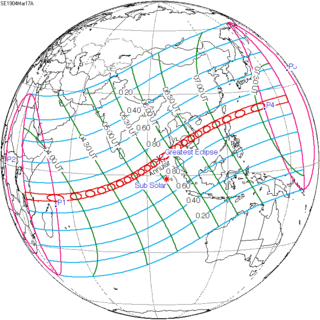 March 17, 1904 (Saros 128) |
 February 14, 1915 (Saros 129) |
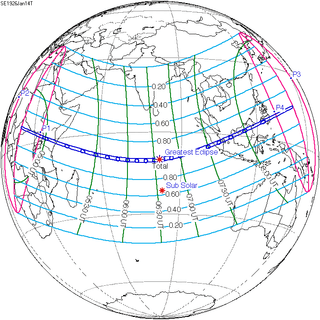 January 14, 1926 (Saros 130) | |
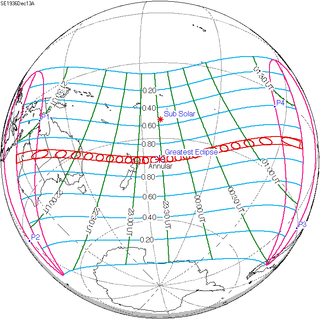 December 13, 1936 (Saros 131) |
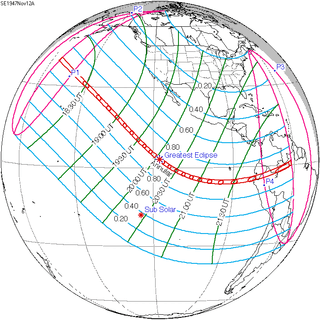 November 12, 1947 (Saros 132) |
 October 12, 1958 (Saros 133) | |
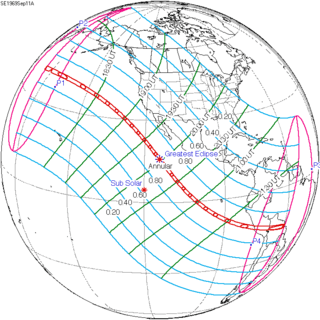 September 11, 1969 (Saros 134) |
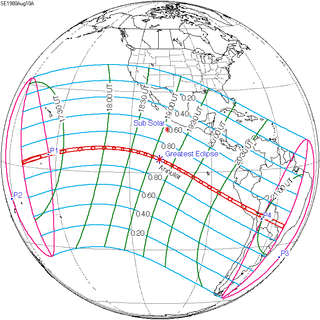 August 10, 1980 (Saros 135) |
 July 11, 1991 (Saros 136) | |
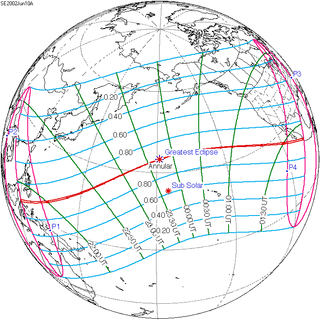 June 10, 2002 (Saros 137) |
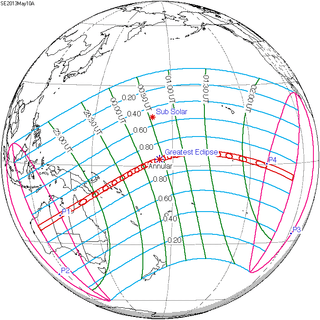 May 10, 2013 (Saros 138) |
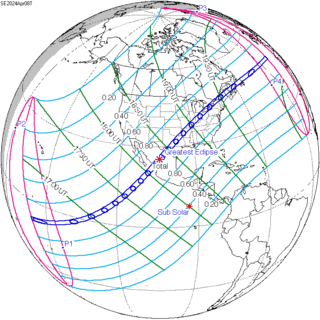 April 8, 2024 (Saros 139) | |
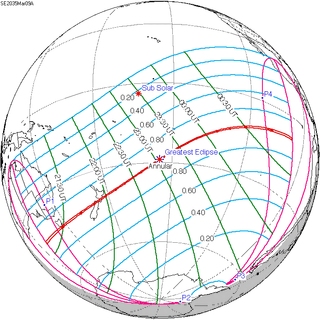 March 9, 2035 (Saros 140) |
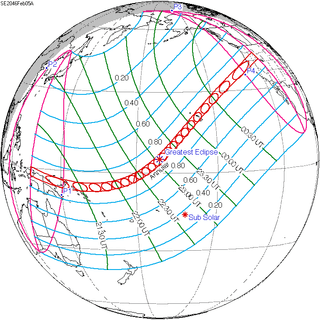 February 5, 2046 (Saros 141) |
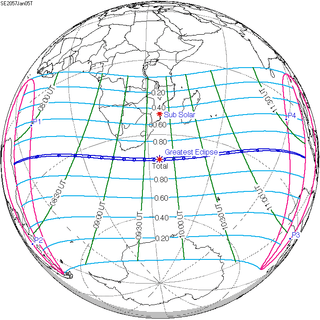 January 5, 2057 (Saros 142) | |
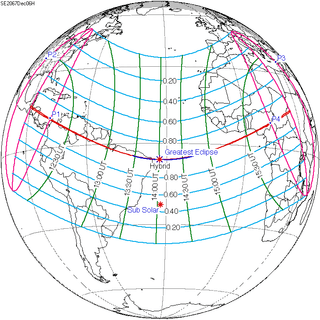 December 6, 2067 (Saros 143) |
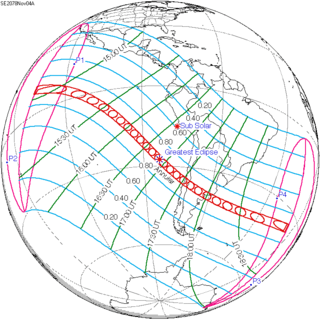 November 4, 2078 (Saros 144) |
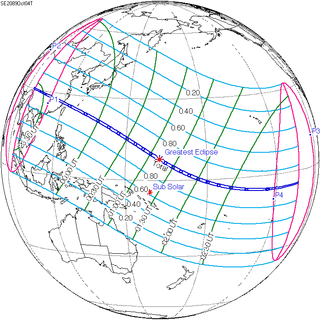 October 4, 2089 (Saros 145) | |
 September 4, 2100 (Saros 146) |
|||
See also
- Eclipse cycle
- Inex - related series
References
- Mathematical Astronomy Morsels, Jean Meeus, Willmann-Bell, Inc., 1997 (Chapter 9, p. 51, Table 9.A Some eclipse Periodicities)